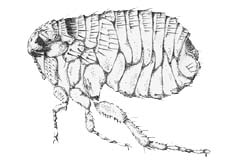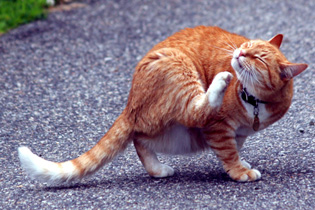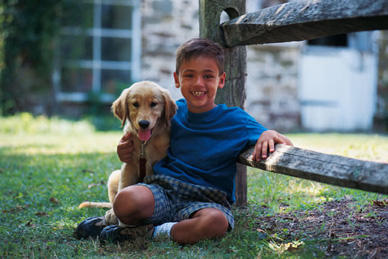Habitat
As a parasite, Dipylidium caninum lives in a number
of hosts. First, the eggs of Dipylidium caninum are
excreted in the feces of the definitive host.
 Then it's intermediate
hosts including the dog-flea, Ctenocephalides canis, the
cat-flea,
Ctenocephalides felis,
the dog louse,
Trichodecte canis, and in some scarce occasions the
human-flea, Pulex irritans aquire the cysticercoid of Dipylidium caninum
by eating the infected feces.
Then it's intermediate
hosts including the dog-flea, Ctenocephalides canis, the
cat-flea,
Ctenocephalides felis,
the dog louse,
Trichodecte canis, and in some scarce occasions the
human-flea, Pulex irritans aquire the cysticercoid of Dipylidium caninum
by eating the infected feces.
Next the flea may infect a set of
hosts including mainly
dogs,
cats, foxes and in some cases, humans
via ingestion of the flea host. By this time, Dipylidium caninum
is in the final host's small intestines where it grows from it's larval worm stage of it's life cycle to an adult.
foxes and in some cases, humans
via ingestion of the flea host. By this time, Dipylidium caninum
is in the final host's small intestines where it grows from it's larval worm stage of it's life cycle to an adult.
Learn more and find a visual diagram of
Dipylidium caninum's life cycle
here.
The overall geographical distribution of
Dipylidium caninum is worldwide. Moreover, human infections
have been most evident in Europe, China, the Philippines, Japan,
Argentina, and here in the United States.


Back to Home